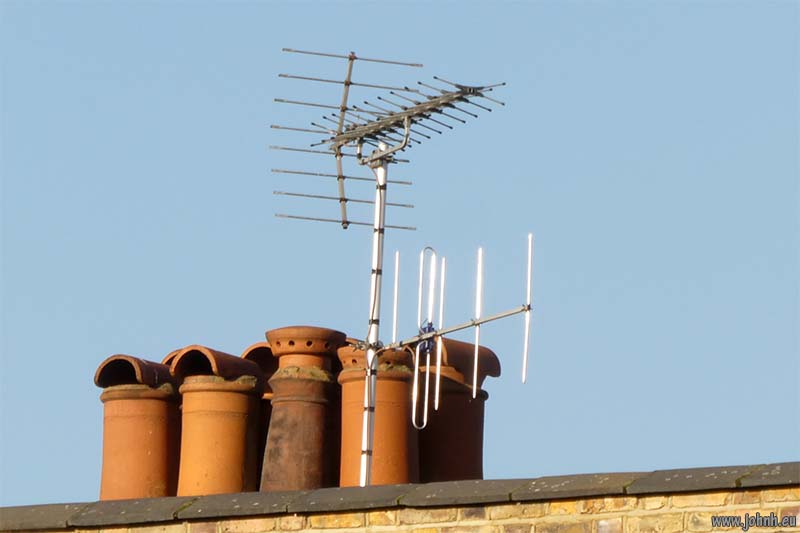The last “H” in Hammersmith?
Looking at the aerials and satellite dishes on the rooftops and chimneys during an exercise walk around Hammersmith and Fulham. We’ve learnt to ignore them but they are an iconic feature of our vernacular urban architecture.
Of course I mean H-aerial, a two element Yagi that would have been rigged to receive BBC black and white television in the 1950s and 1960s. Crystal Palace transmitter switched off this signal in 1985 and yet there are still just a few old H and X aerials up on the roofs of Hammersmith and Fulham.
The era of television broadcasting which is free to receive simply by erecting an aerial on the roof (and paying the television licence) has resulted in rooftops and chimneys littered with aerials for various electromagnetic frequencies. We’ve learnt to ignore them but they are an iconic feature of our urban vernacular architecture.
We can also infer much about the lifestyles of the houses below. Several aerials indicate either a large household with many individual televisions or, more likely in this area, a multiple occupancy house, ie split in to several units.
The aerial directly shows the capabilities installed beneath so we can infer an interest in free-to-air terrestrial or satellite television or subscription satellite television by the style and orientation of the dish or aerial.
Or infer from an elaborate VHF/FM aerial a specialist interest in analogue hi-fi, probably classical music and requiring the best possible radio signal.
My own Father’s initial reluctance to have an ITV aerial or the more recent hesitation about mounting a Sky dish, but also the pride in being the first in the neighbourhood to have mounted the latest style of dish on a home’s roof, say a lot about the central place television and television culture play in our neighbourhoods.
The BSB squarial (“square aerial”) is pretty much an extinct species on our roofs. Having worked for BSB News studio at the beginning of the 1990’s, they were of particular interest as they indicated actual viewers of our new service; squarials were particularly numerous around here at that time as many staff were provided with a free squarial. I have a nostalgic interest in any that remain, but it’s now a while since my last sighting.
The classic UHF Yagi, used since the launch of BBC television in colour in the middle of the 1960s, is now joined by the log periodic pattern, which works better for digital terrestrial broadcasting.
Sound radio also works best with a rooftop aerial; the technology, plus the pursuit of hi-fi listening perfection, has resulted in some of the most exotic aerial arrays mounted on urban houses.
Ubiquitous broadband, even more with fibre to the home, may make some of these rooftop fishbone skeletons obsolete but the essential simplicity remains of one central transmitter radiating programmes to a wide area.













